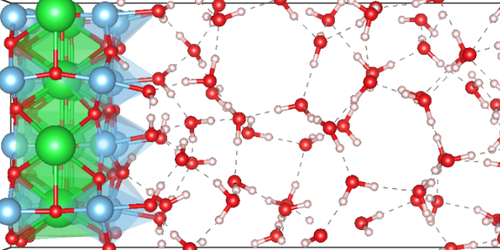A recent work by the Fernandez-Serra group published in Nature Physics entitled Flexoelectricity and surface ferroelectricity of water ice was featured in the Stony Brook University News:
Stony Brook University PhD student Anthony Mannino, working under the supervision of Professor Marivi Fernandez-Serra in the Department of Physics and Astronomy and the core faculty at the Institute for Advanced Computational Science (IACS), spearheaded the theoretical side of the project. It was discovered that ice exhibits strong flexoelectricity — an electromechanical effect that occurs when the material is bent.
The international collaboration was led experimentally by Professor Gustau Catalan and Xin Wen at the Institut Català de Nanociència i Nanotecnologia (ICN2) in Barcelona.
Using the Seawulf supercomputing cluster, Mannino performed large-scale quantum simulations that revealed how the surface of ice can undergo subtle ferroelectric ordering at low temperatures. This ordering amplifies the flexoelectric effect and explains how collisions between ice particles and graupel in thunderclouds can generate the massive charge separations that lead to lightning.


